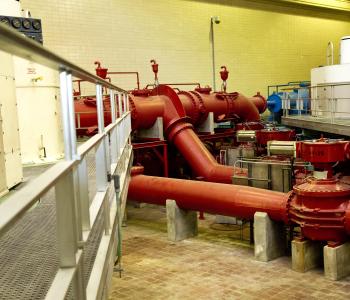DC Water part of Water Research Foundation Team Awarded $1 million Grant by EPA for Exciting New Wastewater Innovation
DC Water announced today that it is partnering with Water Research Foundation, Hampton Roads Sanitation District and several universities on groundbreaking new research that will save customers money and could improve water quality.
The goal is improved wastewater treatment and DC Water’s concept for improving the technology has the potential to save millions for cities around the world, said Chief Executive Officer and General Manager David L. Gadis.
“Our goal is to reduce energy and chemical use and save our customers money while using innovative technology to improve the environment,” explained Mr. Gadis, while praising the partnership with Water Research Foundation, Hampton Roads Sanitation District, George Washington University, Northwestern University and Columbia University.
The U.S. Environmental Protection Agency awarded the collaboration team its ‘Science to Achieve Results grant’ with a three-year timeframe for achieving results. At DC Water, the project is led by Haydee De Clippeleir, the research program manager and Christine deBarbadillo, the director of clean water quality and technology.
deBarbadillo said the Authority has worked closely with all members of this collaboration team for many years exploring solutions and upgrades to existing wastewater treatment processes. Removing nitrogen is a critical element in DC Water’s requirement to clean wastewater to the highest possible level before discharging it back into the Potomac River, where it leads to the Bay.
Discharge of excess nitrogen and phosphorus can lead to algal blooms in surface waters. When that happens, the health of marine life, from fish to crabs to dolphins, is jeopardized.
The typical treatment methods used at water resource recovery facilities to eliminate nitrogen rely on addition of readily degradable organic chemicals such as methanol as well as consuming a tremendous amount of electricity.
“We are using a different pathway into the nitrogen cycle to more efficiently remove nitrogen from wastewater and reduce energy and chemical costs,” deBarbadillo said.








